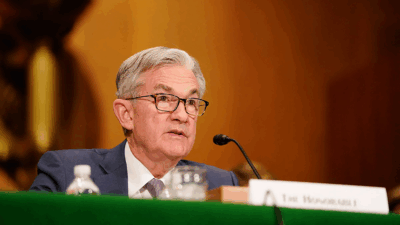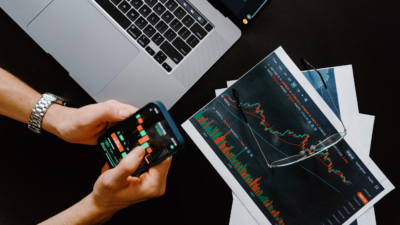
Sign up for smart news, insights, and analysis on the biggest financial stories of the day.
A strong dollar is great if you’re traveling abroad, but not so fun for American corporations trying to sell stuff to foreigners.
The dollar’s ascent to an eight-month high ate into the quarterly sales and profits of S&P 500 companies that maintain a major presence outside the US, according to an analysis published Thursday by The Wall Street Journal. Unfortunately, rising economic confidence at home coupled with weak outlooks in Europe and Asia — compounded by yet another European Central Bank interest rate hike on Thursday — is likely to only make matters worse.
Home is Where the Money Is
While the dollar has tailed off some since the Fed’s relentless interest-rate-hiking campaign against inflation propelled it to a multi-decade high last year, positive momentum in said inflation fight plus macroeconomic resilience has helped the currency maintain strength. Meanwhile, Europe’s ongoing — and frustratingly fruitless — battle against inflation has sunk the value of the euro. After the European Central Bank raised rates to an all-time high and hinted there would be no further hikes, the euro fell to a three-month low against the dollar, with an exchange rate of about 1 euro to $1.07. Wells Fargo Macro Strategist Erik Nelson told Bloomberg he expects the euro to fall even further.
For companies with a majority of their business coming from outside the US, that’s some tough news:
- Apple, which sees 60% of business come from outside the US, said the strong dollar ate 4% off its revenue in the most recent quarter. Meanwhile, Disney says it’s expecting a decline in international park visitors, Nike is expecting exchange rates to ding overall sales, and UPS is expecting a full 13% fall in international revenue.
- Overall, S&P 500 companies that see over half their revenue come from abroad are expecting an 18% dropoff in earnings in the current quarter, according to FactSet, while those with a majority of business coming from inside the US are expecting a record 4% earnings growth.
“If we look everywhere around the world, the U.S. is sort of like the last man standing, and the dollar is coming strong this year,” Win Thin, Brown Brothers Harriman’s global head of currency, told the WSJ.
Selective Apple Picking: The impact of exchange rates can already be seen in Apple’s international pricing plans. Earlier this week, the gadget giant announced the iPhone 15, which comes with all the bells and whistles of the usual next iPhone iteration: souped-up cameras, a shiny new display, supposedly longer battery life, and, oh, a switch to the USB-C charging port, a.k.a., what every non-Apple electronic device in the world uses. In the US, consumers can get all that for the exact same price point that the iPhone 14 had been selling at. But Apple is increasing prices in major markets like China, India, and Japan — in large part because their currencies have fallen against the dollar. In other words, it pays to be American.











